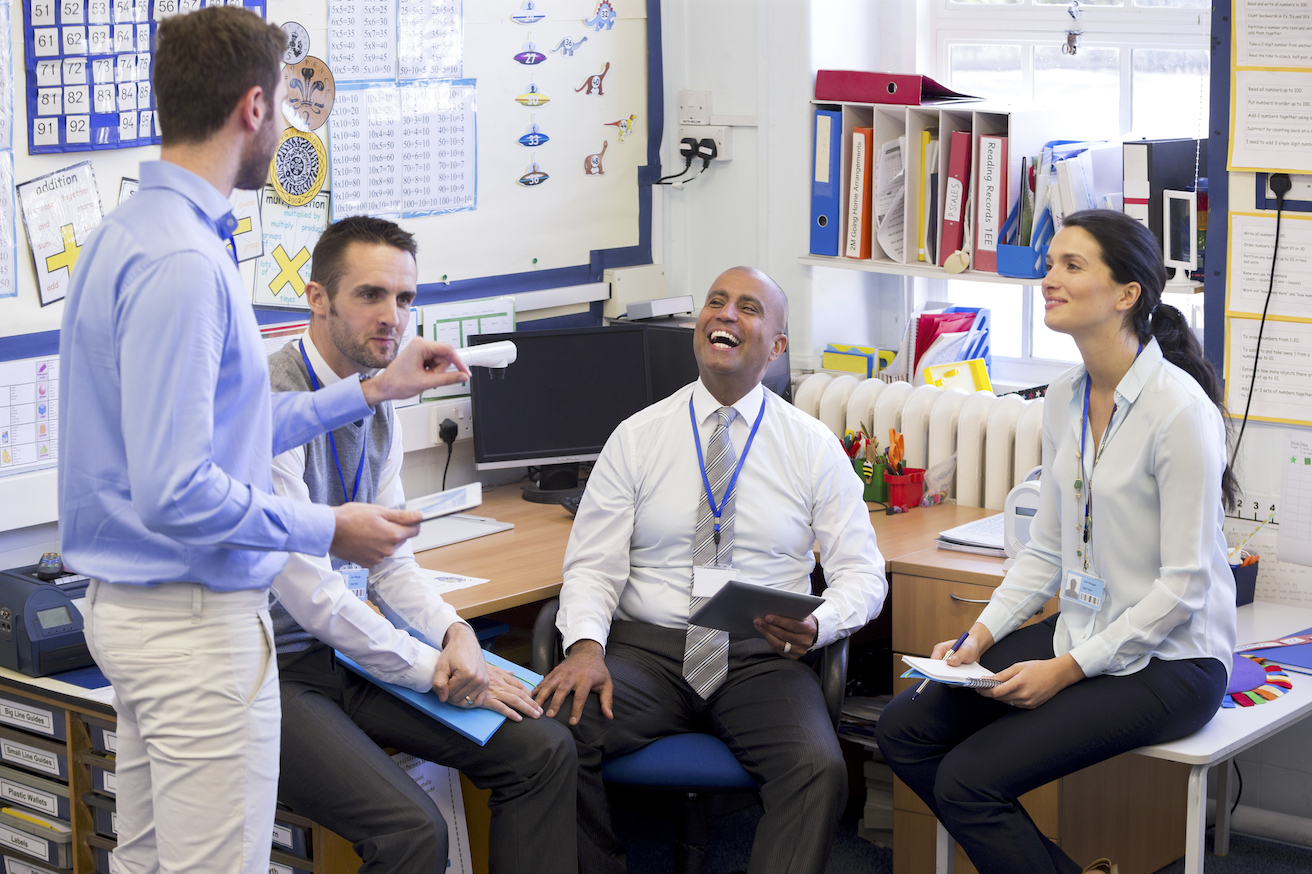As educators, we love to promote collaborative learning among students. But are you focusing enough on teacher collaboration?
Teachers working together can accomplish far more than they can by working apart. And this collaboration makes their work more manageable while also making each lesson deeper and more fulfilling for students.
If you are wondering what collaboration can do for your school and how you can improve it? Our comprehensive guide has the answers you’re looking for!

Better Together
The general public doesn’t understand how lonely teaching can be. After all, how lonely can someone get when they are surrounded by students?
Of course, the honest answer is that there is a big difference between a student and a peer. If a teacher is having difficulties in the classroom or needs to vent, they may feel like they have no one they can turn to.
Improving teacher wellbeing should be at the centre of any collaborative strategy. While collaboration genuinely does improve education and pedagogy, it also helps to improve the emotional health of every educator at the school.
Educator Retention
It’s an open secret that education is not a very lucrative field. That’s why many of the best educators get poached into other positions: they can sometimes be lured away by a higher salary.
You may not be able to offer more money than the competition. But one thing you can improve is your overall retention rate.
Teachers who regularly collaborate with other teachers are going to feel happier and more fulfilled. And they will feel exceptionally loyal to the employers who went out of their way to promote employee wellbeing.
By focusing on collaboration, you can improve the learning experience while also holding on to your very best employees.
A New Kind of Professional Development
Before we dive into ways to improve collaboration, here is another benefit: it helps your school redefine professional development profoundly and beneficially.
Many teachers chafe under the “sit and get” model of PD. That is, they must listen to lectures or read texts from “experts” who have never set foot in the teacher’s school. Ask any given teacher, and they’ll reply that this would be time better spent on their students and lessons.
With better collaboration, you get the best of both worlds. Teachers get to focus on whatever is most important to them while helping provide tips, tricks, and guidance to their peers.
 A Solution That “Scales”
A Solution That “Scales”
One more benefit of collaboration is simple, but it makes all the difference to a school. Here it goes: this is an educational solution that can “scale” as needed.
For example, you may not be able to move every teacher to a collaborative model immediately. But you can start small, such as pairing new hires with veteran faculty mentors. Once this yields tangible results (such as improved student grades and faculty reviews), you can implement the solutions on a larger scale.
And no matter what scale you want to begin with, the solutions below are a great way to get started.
Method #1: Technological Solutions
It’s easy to hear “teacher collaboration” and ask yourself, “who has time for all that?” Fortunately, technology makes it easy to collaborate with another teacher without even leaving the classroom.
For example, several apps allow you to send messages and/or initiate video conversations. Skype and Zoom make for great video communication apps while Slack is one of the best ways to organise professional text communication.
Keep in mind “the more, the merrier.” This doesn’t have to be limited to one-on-one teacher interactions. Setting up an informal group chat is a great way to build team spirit while also encouraging collaboration.
Method #2: Social Media Solutions
When it comes to improving collaboration, you don’t have to reinvent the wheel. That’s part of what makes social media such a versatile solution.
If enough teachers are already on certain forms of social media, you can take advantage of those platforms to initiate online collaboration. This can be as simple as teachers sending direct messages or as complex as daily group chats.
Specific platforms, such as Twitter are not limited to your verified online friends. While that can be both good and bad, it does open the door to collaborating with professionals outside of your school.
Method #3: The Buddy Method
Apps and social media, not your cup of tea? That’s ok: you can collaborate “old school” by busting out the buddy method.
That means formally assigning individual teachers a partner. This can be a “mentor/mentee” relationship or just cross-curricular partners.
When done right, this helps educators create a more robust and engaging experience for teachers. And it helps each teacher realise just how much they still have to learn from one another.
How to Start Improving Teacher Collaboration


